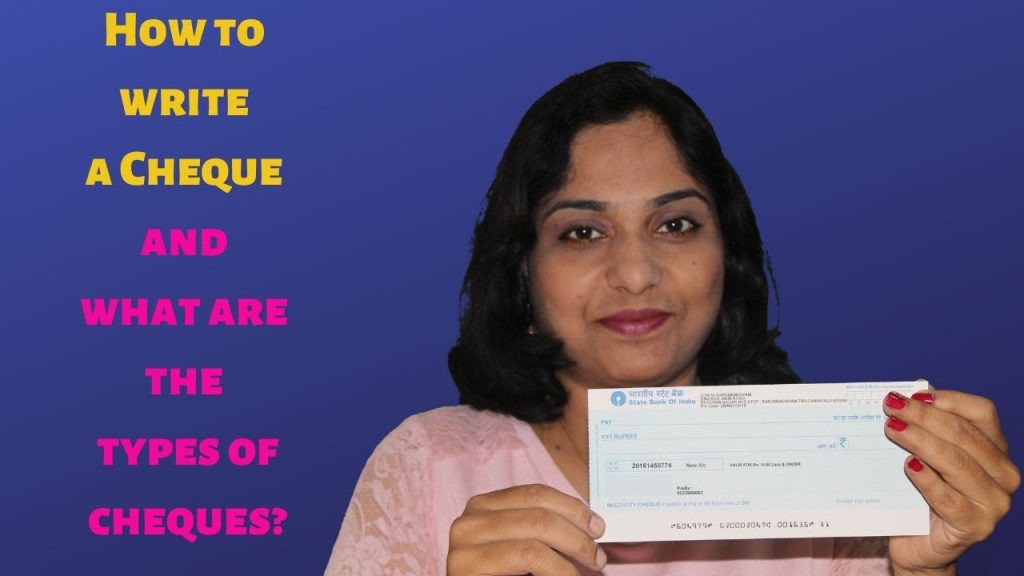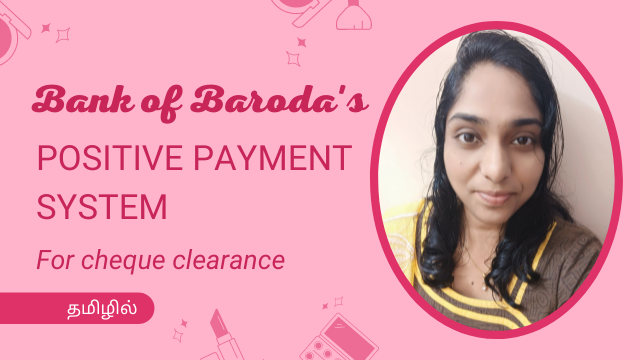
Cheque – A cheque is nothing but a paper document issued by a person to the bank directing them to pay the amount mentioned in the cheque leaf to the person either directly or to his/her bank account.
The person issuing the cheque should have an account in the bank where the cheque has been drawn.
In today’s video let’s see the types of cheques that are most common so you what they and how to fill them.
Knowing about the types of cheques and how to fill them forms quite an important part of banking knowledge.
Not just cheques, but it is also important that you know how to fill a deposit or a withdrawal slip, DD challan and the like.
There are videos that I’ve made on how to fill a DD challan and how to properly fill a deposit slip.
You can check them out below:
In today’s video first let’s see the types of cheques that are most commonly prevalent. And then how to fill them.
Bearer cheque
The Bearer cheque is payable to the bearer of the cheque. You would see the words “or Bearer” at the end of the Name field.
This means whoever bears the cheque will be able to en-cash the cheque.
Ideally this cheque can be given at the counter and whoever hands over the cheque at the counter can get cash against that cheque.
Order cheque
This cheque enables the bank to give money to the person whose name is written on the cheque.
For instance if you have an account in HDFC bank, then you can issue a cheque to your friend if you want to pay him/her money.
In such a case, you should write your friend’s name in the cheque and give him the same.
Your friend can take the cheque to the bank and can get cash against it.
Crossed cheque
You can cross a cheque by putting double lines as shown below at the top left corner of the cheque.
Such a cheque is called a crossed cheque.
Unlike a bearer cheque, a crossed cheque cannot be en-cashed; that is, you cannot get cash at hand against this cheque.
The amount written on the cheque can only be deposited in the bank account of the person whose name is written on the cheque.
Having said that, a crossed cheque can be further endorsed to another person.
For instance, if you give your cheque to your friend named Geetha, she can either deposit that amount in her bank account, or she can endorse it to her friend named Arun by writing his name at the back of the cheque and signing.
Arun can either deposit the amount in his bank account or he can further endorse it to another person.
Account Payee cheque
An account payee cheque is similar to a crossed cheque, where you put double lines across the top left but write Account payee or Acc Payee between the lines.
Unlike a crossed cheque, an account payee cheque cannot be further endorsed to anyone.
The cash has to be deposited in the account of the person whose name is written on the cheque.
Post dated Cheque
This is a cheque you issue to another person by putting a future date. Usually this kind of cheque is used to make EMI kind of payments.
For instance, if you have to pay someone an amount of Rs. 10,000 per month for the next 12 months, you can issue them 12 post-dated Cheque leaves.
Those are the common types of cheques . Now let’s see how to write them.
Date: The first step is to fill in a date. The most common notion is that people would want to fill in today’s date.
It is not necessary that you fill in today’s date (although you can).
If you are issuing a cheque to someone and if you want that person to encash that cheque a week later (because that’s when you will have ample money in your account) than you should put a date next week.
The person who encashes the cheque can only do so at a date that is later than the date mentioned in the cheque, and not before.
Name: The next important column is to fill in the name of the person whom you would want to encash the cheque.
The name should be filled in the field where it says “Pay”.
If you want to withdraw money from your account, then you must write “Self” in that field.
If you are issuing the cheque to someone else, write his/her name clearly. Strike out bearer, if you want the Cheque to be encashed only by the person whose name is written on it.
Amount:
Next write the cash amount in words where it says “Rupees”. Write the cash amount in figures in the box.
Account payee/crossed:
Finally, if you want the cheque to be a crossed cheque put two parallel lines on the top left as shown below.
If you want the cheque to be an account payee cheque, than write Account payee between those lines.
Sign:
Finally don’t forget to sign the cheque.
That’s it! And you are done writing your cheque.







Leave a Reply